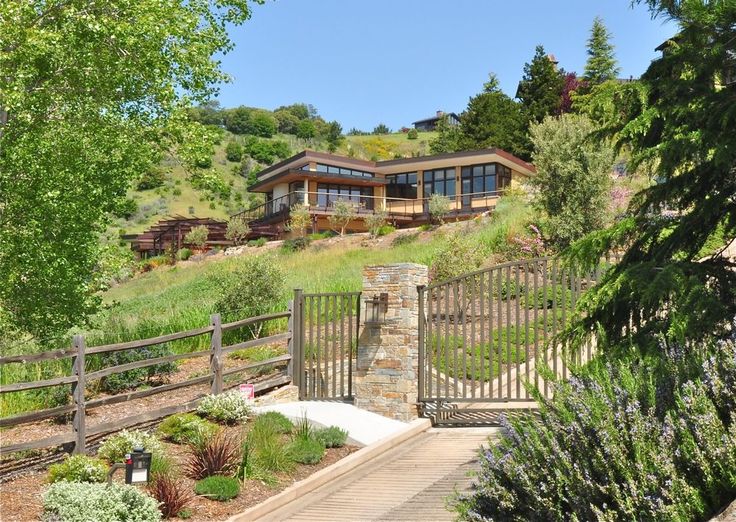
Pressure washing a house is straightforward on level ground—but what if your property sits on a slope or steep incline? Working on a hill introduces a whole new set of challenges: water runoff, equipment safety, angle adjustments, and maintaining balance. Whether you’re cleaning siding, walkways, or the roofline, sloped properties demand special care.
This guide explains how to pressure wash a house on a hill safely and effectively, covering everything from setup and technique to drainage and safety gear. 🧽💦
🧭 Why It’s Different on a Hill
When your home is built on a slope, pressure washing becomes more complex due to:
- Gravity-driven water runoff
- Unstable footing and trip hazards
- Challenging wand angles for even spray
- Uneven pressure coverage
- Potential erosion or oversaturation of the downhill yard
These factors increase the risk of injury, water damage, or a poor-quality cleaning job.
🧰 What You’ll Need
- Pressure washer (gas-powered preferred for mobility)
- 25° and 40° spray tips
- Safety harness (for steep slopes)
- Non-slip shoes or boots 🥾
- Pressure washer extension wand
- Long garden hose
- Detergent safe for siding or concrete
- Plastic sheeting and clips
- Eye protection and gloves
- Portable ladder with leveling legs (optional)
⚠️ Do not use ladders on steep inclines unless specifically stabilized or secured. Consider scaffold alternatives when necessary.
Browse Amazon Here For Top Rated Power Washers And Accessories
🛠️ Step-by-Step: How to Pressure Wash on an Incline
1️⃣ Plan Your Direction and Drainage
- Determine where the water will flow—ideally away from the house and not into the foundation
- Work from the top of the slope downward, never uphill
- Protect flower beds or landscape borders with plastic sheeting
🌊 Direct runoff away from erosion-prone areas by placing small trenches or sandbags if necessary.
2️⃣ Clear and Prep the Area
- Remove furniture, tools, or loose stones from walkways
- Tape off light fixtures, outlets, and vents with plastic
- Use drop cloths to shield any downhill windows or doors from splashback
- Check that your garden hose can reach all the way uphill without tension
3️⃣ Apply Detergent with a Low-Pressure Tip
Start with a soap nozzle or foam cannon:
- Apply cleaner bottom to top to prevent streaks
- Allow dwell time of 5–10 minutes (don’t let it dry)
- Use a siding-safe solution if cleaning vinyl or wood
4️⃣ Begin Washing from the Top Down
Switch to a 25° or 40° nozzle, and begin:
- Cleaning at the top of the slope, working downhill
- Keep the wand at a consistent distance and angle—ideally 12–18 inches from the surface
- Use horizontal strokes for siding and vertical for walkways
🧼 Working downhill helps gravity move dirty water away naturally without soaking previously cleaned areas.
5️⃣ Be Mindful of Safety
- Avoid slick shoes—use non-slip footwear and gloves
- Take your time—slopes can lead to slips and fatigue
- If walking isn’t safe, consider pressure washing from solid flat platforms or retaining walls
- For multi-story homes on hills, use an extension wand to stay grounded while reaching high
🧽 Sloped Surface Pressure Tips
| Surface | Technique |
|---|---|
| Sloped siding | Use overlapping passes, work left to right, keep even angles |
| Sloped concrete path | Start from top, apply even pressure, rinse thoroughly |
| Deck on incline | Check drainage gaps, protect stairs or joints |
| Retaining walls | Clean separately using low pressure to avoid damaging mortar |
❌ Common Mistakes to Avoid
- ❌ Working from the bottom up—causes streaking and backflow
- ❌ Spraying too close—leads to etching or wood damage
- ❌ Overusing water—can lead to erosion downhill
- ❌ Using ladders on unstable ground
- ❌ Ignoring runoff direction—may flood flower beds or neighbors’ property
🧼 Eco-Friendly Considerations
- Use biodegradable soaps that won’t harm nearby vegetation
- Divert runoff away from drains or water sources
- Rinse downhill plants after cleaning to avoid chemical burn
- Use minimal pressure to reduce water waste
🧰 Optional Equipment Upgrades
If you’re working on hills often:
- Invest in a surface cleaner attachment for driveways
- Get a longer pressure washer hose (50+ ft) for mobility
- Use a telescoping wand to clean high without climbing
- Purchase weighted base plates if setting up temporary scaffolding
🗓️ Best Times to Wash
| Season | Why It’s Ideal |
|---|---|
| Spring | Remove winter grime and prepare for warm weather |
| Fall | Clear away summer debris before freezing temps |
| Dry weeks | Ensures water runoff won’t oversaturate slope |
☀️ Avoid cleaning right before or after heavy rains—the slope will be too slippery and unstable.
💬 Final Thoughts
Pressure washing a home on a hill isn’t impossible—it just requires more planning, patience, and proper technique. By working with gravity, preparing your space thoughtfully, and using the right tools, you can refresh your exterior without damaging your landscaping, home, or yourself.
With the right precautions and a little extra effort, your sloped property will sparkle just like any flat one—maybe even more. 🏡✨💦
Browse Amazon Here For Top Rated Power Washers And Accessories



